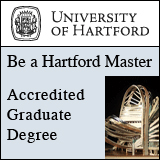
Today’s News - Wednesday, February 25, 2015
EDITOR'S NOTE: Tomorrow is this week's "floating" no-newsletter day - we'll be back Friday, February 27.
• Five finalists vie for the 2015 EU Prize for Contemporary Architecture - Mies van der Rohe Award (lotsa culture with wine and student happiness thrown in for good measure).
• Semuels delves deep into why developers are still building sprawl and ever-larger McMansions: it's still the American Dream - with a touch of anti-Agenda 21'ers thrown in for good measure (a fascinating - if depressing - report!).
• Perhaps developers should delve into the ULI's newly-launched "How Housing Matters," a free online database that "links the location, affordability, and stability of a community's housing to effects on education, health, and the economy."
• Dale delves into what Queensland is doing "to finally get off the outdated jobs-versus-environment seesaw" that offers lessons for a lot of other places.
• Caruso's Q&A with Rifai, an architect and General Secretary of the UN World Tourism Organization re: "the positive effects of mega-events, and why tourism is a human right."
• Glaeser explains why "London has the edge now over New York."
• A quick (and amusing) take on Glaeser's points re: London vs. NYC: "Granted, he was standing on a podium at the top of the Shard surrounded by Londoners, but we like to believe he was being genuine nonetheless."
• Lorrimer offers "10 challenges facing architecture and ways to turn them into opportunities - architects have been staring into the headlights for far too long."
• The U.K.'s Soft Landings is about to take off elsewhere: it's a "new collaborative process to solve the myriad issues that can lead to gaps between design intent and as built performance."
• Fisher is in a bit of a fume about Minneapolis zoning and building codes to ensure "visual interest": "when zoning officials try to regulate aesthetics, watch out!"
• Ostby argues that "there seems to be some confusion between Thomas Fisher" and zoning officials' "attempt to limit the use of certain materials - both groups are after the same thing. They should talk. Who knows what could happen? Maybe something beautiful."
• CASE's Davis profiles three firms who "are among a new class of architectural practices investing in research. If technology is going to change architecture, why shouldn't it be architects who lead the research and development?"
• Eyefuls of Mamani's "spaceship architecture" in Bolivia that has "been derided as kitschy-looking cohetillos" - but fans "say his colorful 'new Andean' style has served to reinvent a city once aesthetically monochromatic" (it makes us smile!).
• Betsky basks in his "lasting impressions" of Jerde's festival architecture: "Jerde sold me on the idea that architecture, however big and however much part of our consumer culture, could be functional and fun."
• PlanPhilly leaves UPenn to join WHYY/ NewsWorks.org, but will still be in touch with PennPraxis.
• Mark March 8 on your calendar and help ArchiteXX celebrate women architects on International Women's Day by contributing Wikipedia entries on notable women in architecture, design, urban planning, and construction.
• A good reason to be in Toronto in May (besides - hopefully - spring weather): TCLF's Second Wave of Modernism III conference: Leading with Landscape: What does it mean for a 21st century city to be historic and modern at the same time?
• Call for entries (deadline extended!): Axis Civitas: Gowanus by Design 3rd international design competition.
| |






|
|
|
To subscribe to the free daily newsletter
click here
|
5 Finalists Selected for the 2015 EU Prize for Contemporary Architecture - Mies van der Rohe Award -- Lederer Ragnarsdóttir Oei/Ravensburg Art Museum; BIG – Bjarke Ingels Group/Danish Maritime Museum; Archea Associati/Antinori Winery; Estudio Barozzi Veiga/Philarmonic Hall Szczecin; O’Donnell + Tuomey/LSE Saw Swee Hock Student Centre [images]- ArchDaily |
Why Are Developers Still Building Sprawl? Boomers and Millennials say they want to live in compact, walkable developments, but builders are putting their money into suburban McMansions...In some parts of the country, there’s been a rallying call against sustainable development...If consumers come around to “smart growth” in those areas, perhaps builders will too. By Alana Semuels- The Atlantic |
Urban Land Institute Launches "How Housing Matters" Resource: The new online database aggregates information that links the location, affordability, and stability of a community's housing to effects on education, health, and the economy...a free searchable database of research and news...- Architect Magazine |
Jobs versus the environment: the debate Queensland can end: There is a way to finally get off the outdated jobs-versus-environment seesaw – and many of the lessons for Queensland are relevant for other parts of the country too... By Allan Dale- The Conversation |
Tourism and the City: A Conversation with Taleb Rifai and the UNWTO: The architect and General Secretary of the United Nations' World Tourism Organization on building better cities, the positive effects of mega-events, and why tourism is a human right. By Andrew Caruso- Metropolis Magazine |
Edward Glaeser: Two great cities - but London has the edge now over New York: In terms of opportunity, security, infrastructure and even all-round energy, the capital is far ahead of its great rival: ...both cities will continue to do more than their share for humanity. Yet it is hard for a native New Yorker such as myself not to be a little bit envious of the energy that is now on display in London.- Evening Standard (UK) |
10 objective reasons why London is better than New York: Edward Glaeser, native New Yorker, cities economist...explained why...London now has the edge over its rival. Granted, he was standing on a podium at the top of the Shard surrounded by Londoners...but we like to believe he was being genuine nonetheless.- CityMetric (UK) |
10 challenges facing architecture and ways to turn them into opportunities: A response to John Held’s paper on ‘Deskilling and Reskilling Architects’: Australian architects have been staring into the headlights for far too long. It’s time to use those headlights to illuminate our future and to change the conversation. By Leone Lorrimer/dwp|suters- Architecture & Design (Australia) |
How “soft landings” can avoid a building crash: ...buildings don’t crash as spectacularly as planes, but they do crash. The Soft Landings process is a way to avoid the mistakes the building industry prefers to bury...Many buildings with big green ideas actually have technology that is not working optimally – or sometimes not at all...A new collaborative process...is promising to solve the myriad issues that can lead to gaps between design intent and as built performance. -- Rod Bunn/Building Services Research and Information Association- The Fifth Estate (Australia) |
Enough visual interest, already! Minneapolis zoning and building codes that seek to ensure “visual interest” may have the opposite effect: The problem does not stem from a lack of talent on the part of our design community...But when zoning officials try to regulate aesthetics, watch out! ...we need to trust the design talent we have here and stop accepting so much well-intentioned ugliness. By Thomas Fisher- Minneapolis Star Tribune |
The balance between beauty and 'muddle': Architects and Minneapolis planners need to get on the same page: There seems to be some confusion between Thomas Fisher...and the intentions of zoning officials in their “misguided” attempt to limit the use of certain materials...both groups are after the same thing. They should talk. Who knows what could happen? Maybe something beautiful. By Thomas Ostby- Minneapolis Star Tribune |
Three Top Firms That are Pursuing Design Research: Perkins+Will, The Living, and KieranTimberlake are among a new class of architectural practices investing in research: If technology is going to change architecture, why shouldn’t it be architects who lead the research and development? By Daniel Davis/CASE -- Ajla Aksamija; David Benjamin; Billie Faircloth [images]- Architect Magazine |
Bolivia’s “spaceship architecture” showcases the new wealth of indigenous people: Freddy Mamani Silvestre’s extravagant urban mansions in El Alto, Bolivia, have been derided as kitschy-looking cohetillos”...But the admirers...say his colorful “new Andean” style has also served to reinvent a city once aesthetically monochromatic... [images]- Quartz |
Jon Jerde and Festival Architecture: ...lasting impressions: His shopping malls...still suffered from being inwardly turned...But, the best of them were always fun and full of light and form, and layered a sense of civic importance...Jerde sold me on the idea that architecture, however big and however much part of our consumer culture, could be functional and fun. By Aaron Betsky -- Robert A.M. Stern; Deborah Sussman- Architect Magazine |
PlanPhilly leaving UPenn to join WHYY's growing news operation: ...will leave its original home at the University of Pennsylvania's School of Design, and join WHYY's growing newsroom. PlanPhilly began as a project of PennPraxis, PennDesign's clinical practice arm. -- Matt Golas- NewsWorks.org |
March 8: Help ArchiteXX Celebrate Women Architects on International Women's Day: The independent organization is rallying an effort to give more women designers recognition on Wikipedia and in history.- Architect Magazine |
Second Wave of Modernism III: Leading with Landscape: What does it mean for a 21st century city to be historic and modern at the same time? May 21-24, Toronto- The Cultural Landscape Foundation (TCLF) |
Call for entries - deadline extended!: Axis Civitas: Gowanus by Design 3rd international design competition; cash prizes; registration deadline: May 15 (submission deadline: July 31)- Gowanus by Design |
Nuts + Bolts #11: CAPitalizing on Culture Change: How candor, authenticity, and provocation (CAP) can create a firm culture that drives thoughtful, positive, and creative change. By James Crispino, AIA- ArchNewsNow |

|
COBE + Transform: Porsgrunn Maritime Museum, Porsgrunn, Norway: The new saw-toothed museum manages to fit into its surroundings, by mirroring the shapes of the town's characteristic gabled roofs, while at the same time appearing contemporary with its abstract shape and aluminum facades. By Ulf Meyer [images] |
|
|
Note: Pages will open in a new browser window.
External news links are not endorsed by ArchNewsNow.com.
Free registration may be required on some sites.
Some pages may expire after a few days.
© 2015 ArchNewsNow.com

